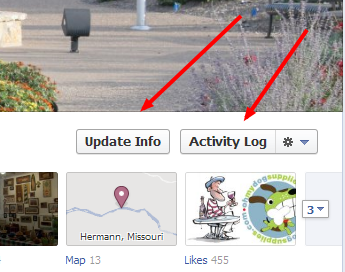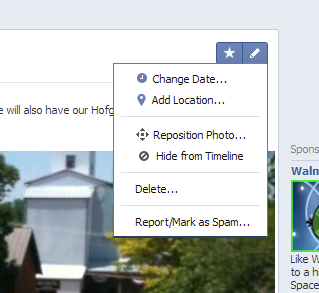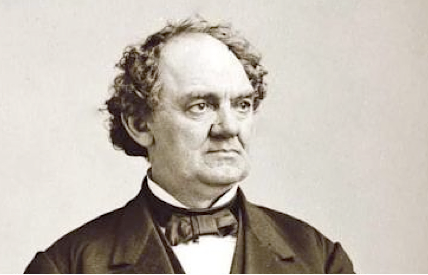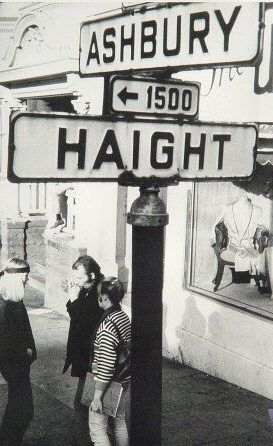Whether you love or hate Facebook’s new Timeline it’s here to stay! If your a brand, think of this as a way to chronologically feature key activities, accomplishments and/or events you want your fan base to review.
1) As you start to optimize this content remember you have the ability to select Update Info in your upper right and also select View As at the top right hand side of the age when you have selected your Profile page.
- The Update Info should be completed and as detailed as possible - this enables you to drive better engagement with your fan base and improve brand awareness.
- The View As feature simply enables you to make changes and then view the page as a Fan might, enabling you to make sure your changes are effective.
2) You have the ability to upload a high quality image as your Cover Photo - this is the first image any visitor to this page sees and it should be an image that will drive engagement with the visitor. You can upload up to 851 by 351 pixel wide image based on Facebook’s Timeline dimensions.
Don’t think of this as a static image that should be carefully selected early on and then leave it up for a long period of time. You should rotate this image at least once or twice during a 30-60 day period to drive brand engagement.
Faceook does not want this image to be an ad about your company or services and have strict rules against your uploading an image that has price, purchasing information and/or any calls to action. This image’s sole function in Facebook’s TOS is to convey branding in a compelling way with the visitor.
3) Think of the Timeline Profile page as a cascading digital waterfall of images, friend activity, events, “Likes” Milestones and Shares. Speaking of “Shares” - these function as a way to engage with and provide a digital high five to your community. Use them accordingly.
Remember all of these Shares will be reflected in your Timeline Strategy. So, be selective about what you Share as your building up a historical flow of information that you visitors can see. Think of this as content curation and continuity - be mindful of what your doing with these branded elements. They should also drive “likes” within your community of Fans - this is engagement in its purest form.
4) Pinned Posts are a new Feature for Facebook - these give you the ability to feature something you’ve done at the very top of your page and they will stay resident at the top of your page for up to seven days.
You also have the ability to edit these (just the position of the image) after you’ve Pinned them. We recommend changing these at least 2-3 times a week. Studies have shown rotating these images drives more Fan and User engagement.
Use pinned posts as a component of your overall content strategy across the social web. If your brand is featuring images via Pinterest, Twitter or your Blog then amplify your message so your community sees the same images across all of your social profiles. And, again, to emphasize - change these frequently and try to use compelling images that will drive engagement, visibility and sharing via your community.
You also have an opportunity to Highlight specific posts - meaning, this expands your image size so it takes up two columns, giving you the ability to make an image stand out in your Timeline.
5) Apps add real sizzle to your Timeline Profile and should be integrated with your brand in a meaningful way. You have a growing list of 3K to choose from and this list is expanding every day. As an example, the market leader in social engagement apps across all popular Social Platforms including Facebook is Wildfire - have a broad range of apps that extend the functionality and engagements on popular social platforms.
There has been and continues to be some controversy about whether or not using third party apps to post content on Facebook has the same impact as doing via Facebook. The jury is still out on this - we’ve seen studies that indicate there is no discernible difference and that Facebook will not differentiate in terms of ranking the content via their Edge Rank algorithm. But, we will circle back to an app like Edge Rank Checker on a subsequent blog post.
6) Finally Milestones are another tool to make key events in your company’s history stand out. Just click the Sharing tool at the top of your Page’s Timeline and add a Headline, Location, Date and Details of your Milestone. The images are displayed in 834 by 430 and the earliest date you can add a Milestone is January 1, 1000.
Executive Summary for Busy Marketers:
1) Successful Facebook Timeline optimization is really Content Development and Curation.
2) Image quality is critical - rinse and repeat weekly or more frequently.
3) Complete your Profile, Add Apps to drive engagement and brand analysis.
4) Use Milestones to underscore key events or accomplishments in your company’s history.
What’s in the future for Facebook Timeline Strategy? We expect Facebook will continue to look for opportunities to drive revenue via integrated advertising and/or other enhancements, features and capabilities that may be offered solely to businesses and brands.






















